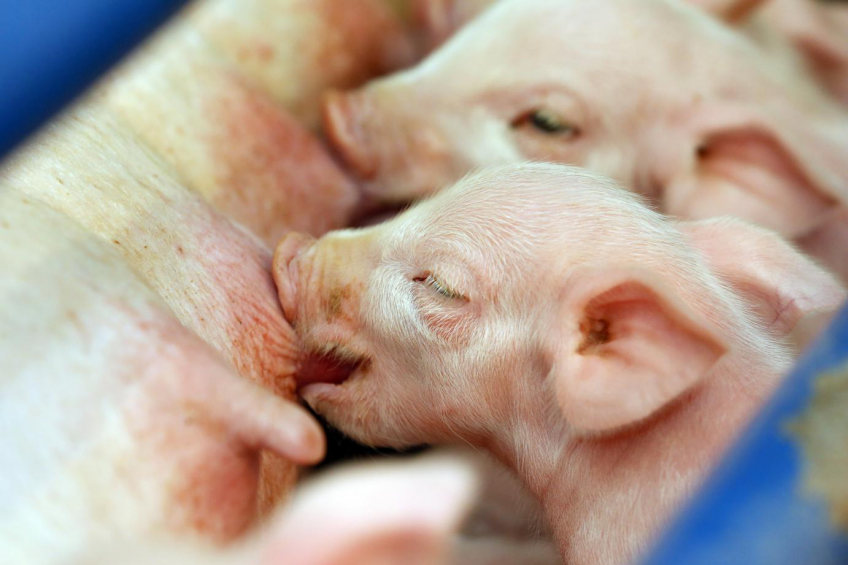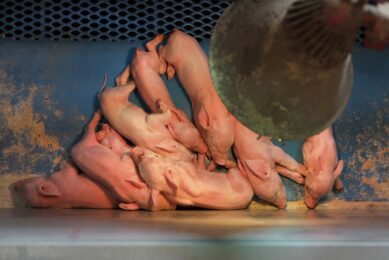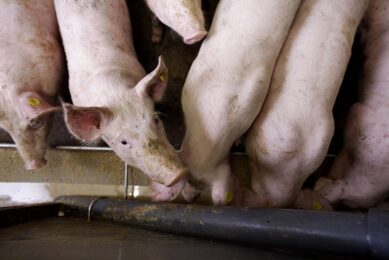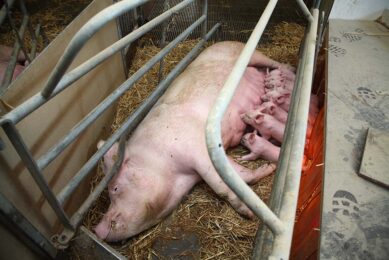Target pig weaning weight to ensure better performance

Pig farmers should be looking to use average weaning weight as their primary objective rather than size of litter to maximise sow lifetime performance, say researchers.
Research carried out by the Agri-Food and Biosciences Institute, Hillsborough, UK found pigs born light but weaned heavy outperform heavy birthweight pigs that are weaned light. This has important implications for the current pig population in the UK as the numbers of pigs born light has increased as litter sizes have grown.
Mark Hawe, pig adviser to the Department of Agriculture in Northern Ireland, says that while litter size is very important, the research confirms average weaning weights are the new primary objective, not pig numbers. He suggests farmers should target a weaning weight of 8kg a pig and a minimum of 95kg/litter. “Instead of aiming solely for large litters, which can lead to some very small piglets at birth, there will be a better lifetime performance by focusing on larger weaning weights,” says Dr Hawe. He believes this can be achieved through good management.
Size of the litter should match the sow’s ability to produce milk
Dr Hawe recommends not serving a gilt weighing less than 150kg liveweight, to ensure she is able to feed her piglets, and using gilts as foster mothers. “Gilts will display both rows of teats when lying down and the teats are more prominent and easier for piglets to grasp. Therefore gilts make ideal foster mothers. But the temptation is to foster too many piglets on to gilts, meaning the gilts get plundered and are often oversucked.”
Sows should not be oversucked either. The size of the litter should match the sow’s ability to produce milk, he adds. Both sows and gilts should be in good condition coming into the farrowing house – well-fleshed but not fat. A condition score of 3 is recommended.
Extra glucose and energy booster pays off
Feed intakes should also increase gradually after farrowing. “A good target is 7kg within the first 10 days as long as the sow does not stall. This should be increased to a target of 10kg by whatever means possible,” says Dr Hawe. A good nutritionist is integral to formulating the correct ration, he adds. “There are good products out there to top up rations. Top dressing with extra glucose or an energy booster pays off.”
Temperature control
Lowering the temperature of the farrowing house is one of the easiest changes that can be made to make a difference to sow intake and piglet weaning weights. Dr Hawe suggests “ruthlessly” reducing air temperature in the farrowing house 24 hours after the last sow in the room farrows to about 18C, with snug areas in place so piglets are not chilled.
“Snugs or creeps are regaining popularity. They can be a hassle because the pigs are not as visible, but this is a small problem compared to the growth rates that can be achieved with a cooler air temperature.” Fresh water is important, too. “Nothing will knock milk flow more than stale water and a sow shouldn’t have to work to get water,” adds Dr Hawe.
Source: FWI
Read more articles on Piglet Health, Sow Management and Piglet Feeding
 Beheer
Beheer








 WP Admin
WP Admin  Bewerk bericht
Bewerk bericht